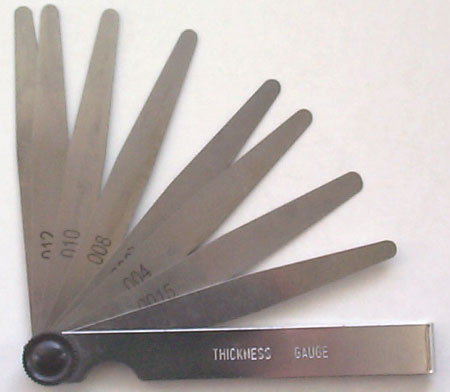Here's an old tip for drilling cross holes accurately, without a jig.
Mount the work-piece in the vice as usual, put a pointed rod in the drill chuck (a small centre drill will do, but is slightly less accurate), and balance a thin strip of metal on the work-piece; a steel rule is perfect.
Carefully lower the chuck to gently pinch the rule between the work-piece and the pointed rod as shown in the photo. The chances are that the rule will tilt because the pointed rod is not over the centre of the work-piece. Move the work-piece until the rule is horizontal (see photo) - it should be easy to do this accurately by eye to less than 0.20 degrees if you line it up to something known to be horizontal.
When satisfied, replace the pointed rod with a centre drill and start drilling.
The third photo shows the result of drilling a 6.3mm rod with 4.5mm drill. A drill that is large compared to the work-piece highlights any inaccuracy.
The last picture shows how the error "O" is affected by the tilt "A" of the rule. Since Sin(0.2) = .0035, the offset error would be about 1.7 thousandths of the diameter of the work-piece.




Mount the work-piece in the vice as usual, put a pointed rod in the drill chuck (a small centre drill will do, but is slightly less accurate), and balance a thin strip of metal on the work-piece; a steel rule is perfect.
Carefully lower the chuck to gently pinch the rule between the work-piece and the pointed rod as shown in the photo. The chances are that the rule will tilt because the pointed rod is not over the centre of the work-piece. Move the work-piece until the rule is horizontal (see photo) - it should be easy to do this accurately by eye to less than 0.20 degrees if you line it up to something known to be horizontal.
When satisfied, replace the pointed rod with a centre drill and start drilling.
The third photo shows the result of drilling a 6.3mm rod with 4.5mm drill. A drill that is large compared to the work-piece highlights any inaccuracy.
The last picture shows how the error "O" is affected by the tilt "A" of the rule. Since Sin(0.2) = .0035, the offset error would be about 1.7 thousandths of the diameter of the work-piece.


















































![DreamPlan Home Design and Landscaping Software Free for Windows [PC Download]](https://m.media-amazon.com/images/I/51kvZH2dVLL._SL500_.jpg)


















